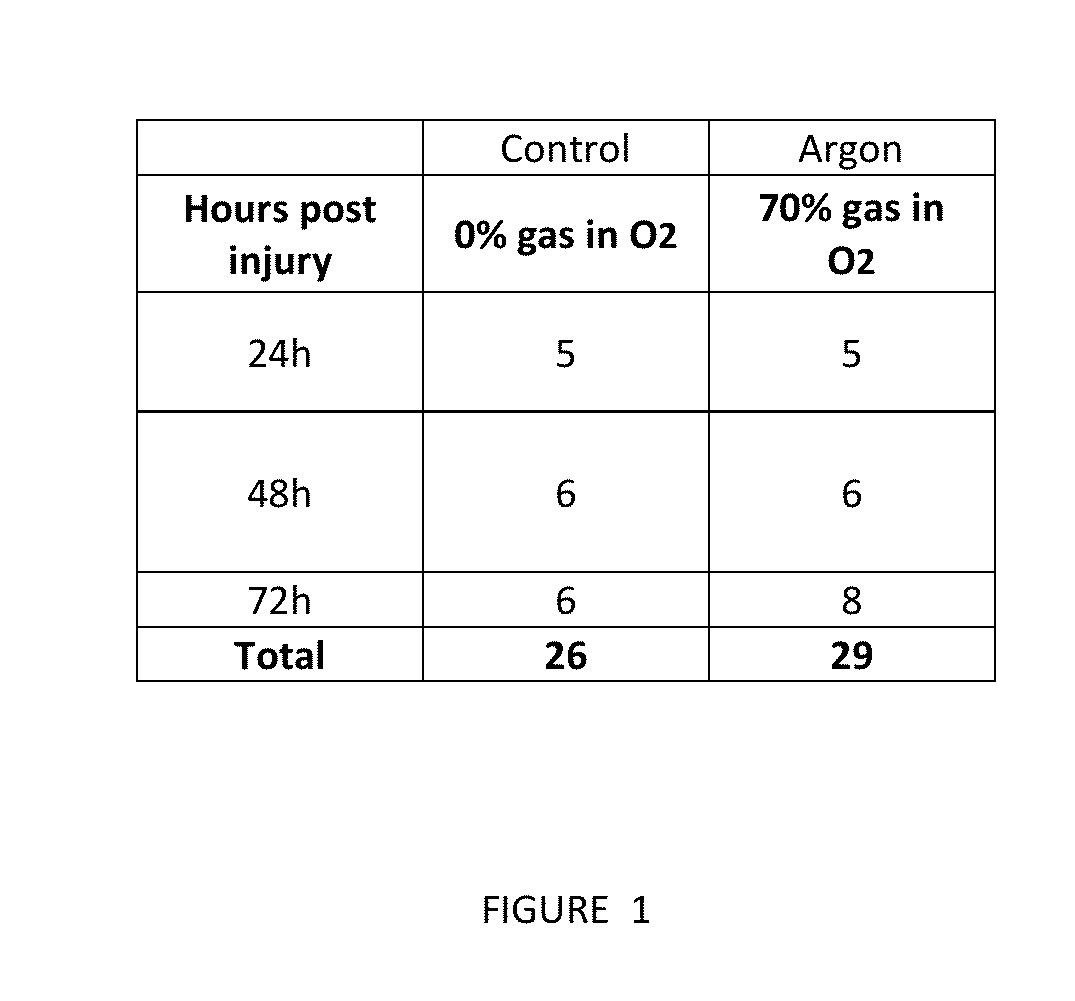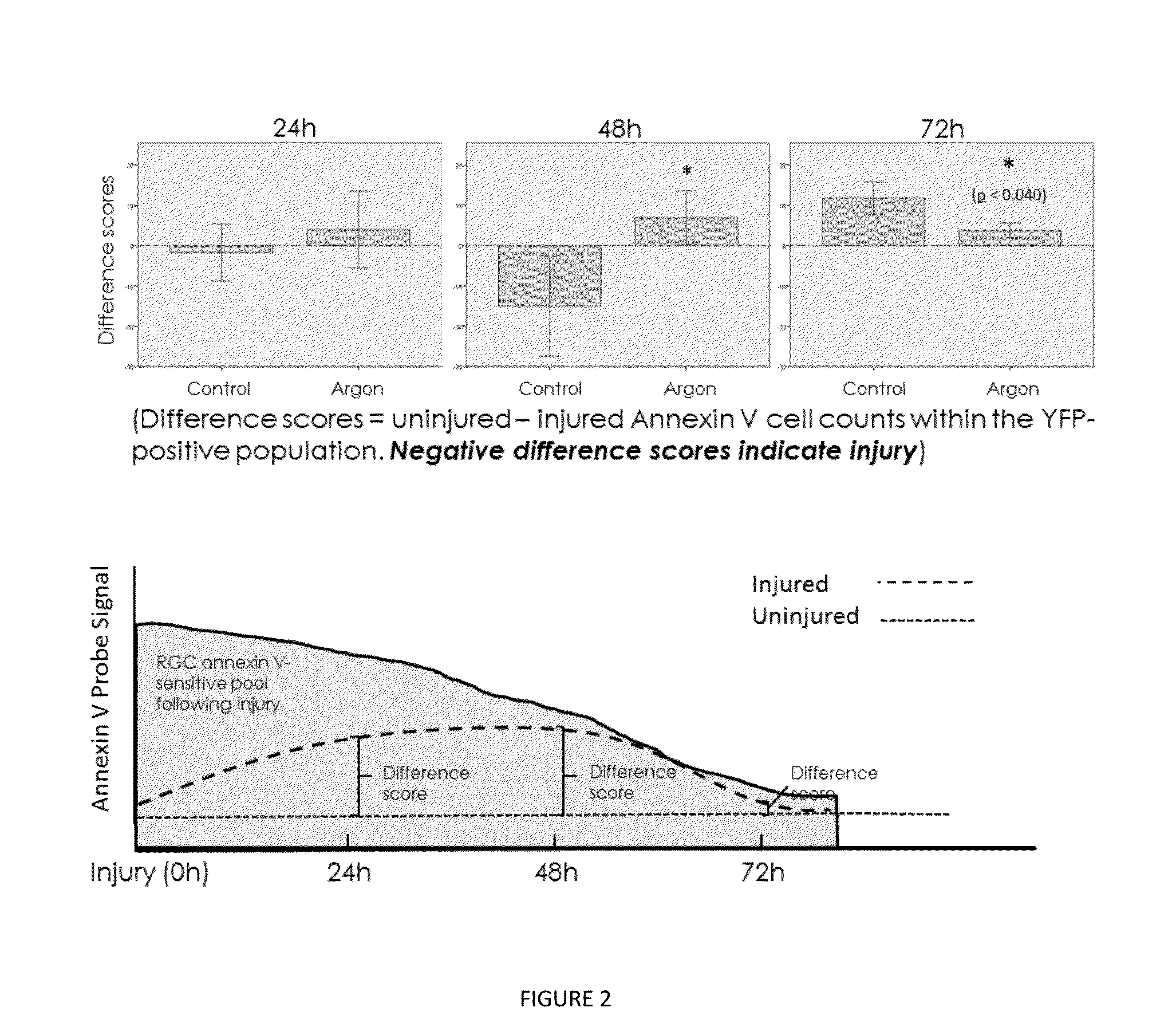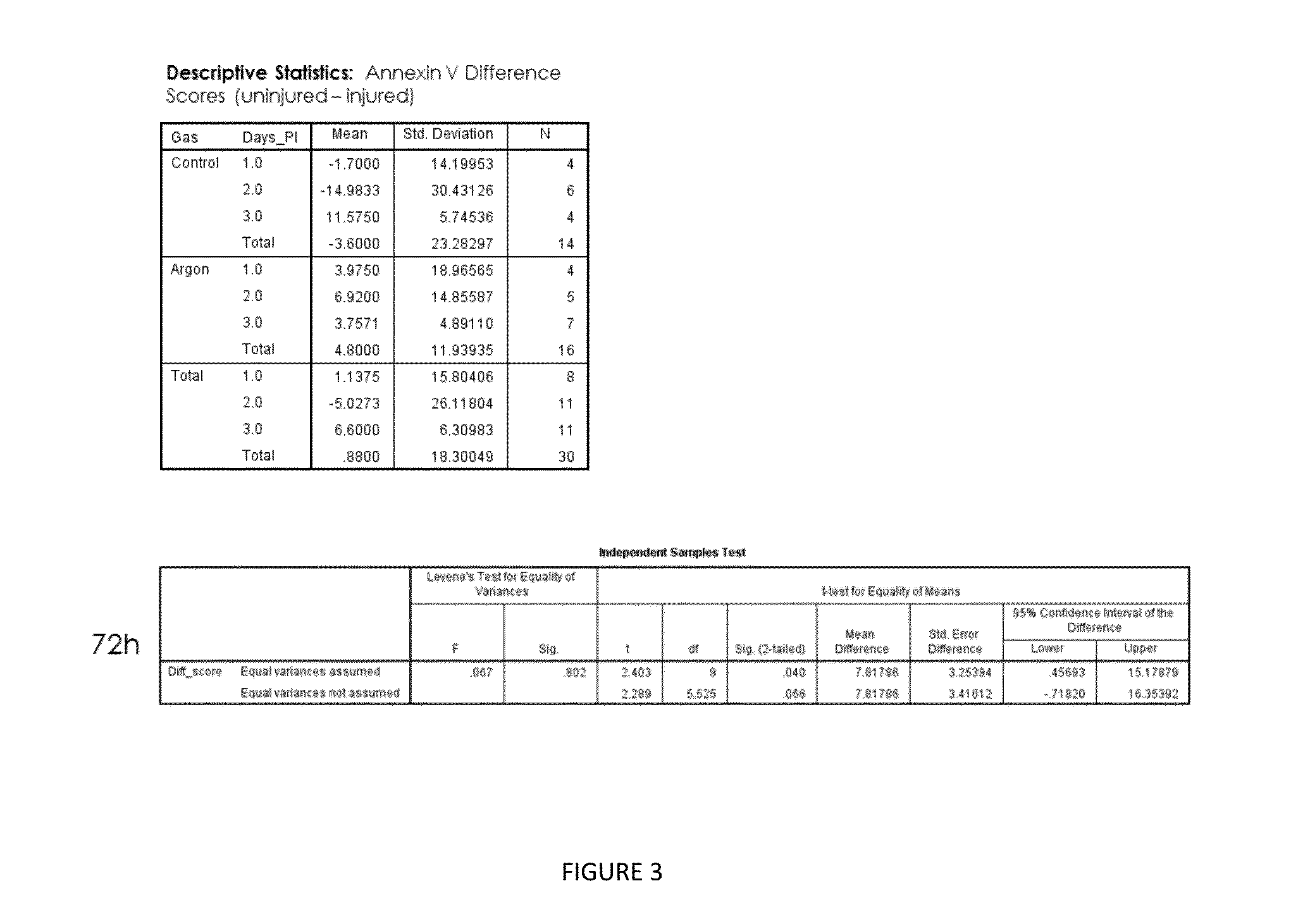Non-anesthetic protective gases in combination with liquid anesthetic agents for organ protection
- Summary
- Abstract
- Description
- Claims
- Application Information
AI Technical Summary
Benefits of technology
Problems solved by technology
Method used
Image
Examples
examples
Methods
[0059]B6.Cg-Tg(Thy1-YFP)16Jrs / J mice: Thy1-YFP mice were exposed to a vapor anesthetic agent (Isofluorane or Sevofluorane), in an anesthetic induction chamber. Animals were temperature probed, sterile eye lubricant was applied to prevent corneal damage, and an incision was made adjacent to the orbital ridge. The left orbit was exposed, and the lacrimal gland gently resected and covered with saline soaked gauze. The superior extraocular muscles were then used to rotate the eye and expose the optic nerve. Using microscissors, the dura was resected, and the optic nerve was transected approximately 0.5 mm from the posterior aspect of the eye bulb. Preservation of blood supply was evaluated through the dissecting microscope focused through a dilated pupil and a coverslip. The skin was closed with suture clips, analgesics (buprenorphine in saline) administered, and the mouse was transferred to an Argon (70%) / Oxygen (30%) perfused air chamber on a warming mat. Mice were monitored an...
PUM
| Property | Measurement | Unit |
|---|---|---|
| Fraction | aaaaa | aaaaa |
| Fraction | aaaaa | aaaaa |
| Fraction | aaaaa | aaaaa |
Abstract
Description
Claims
Application Information
 Login to View More
Login to View More - R&D
- Intellectual Property
- Life Sciences
- Materials
- Tech Scout
- Unparalleled Data Quality
- Higher Quality Content
- 60% Fewer Hallucinations
Browse by: Latest US Patents, China's latest patents, Technical Efficacy Thesaurus, Application Domain, Technology Topic, Popular Technical Reports.
© 2025 PatSnap. All rights reserved.Legal|Privacy policy|Modern Slavery Act Transparency Statement|Sitemap|About US| Contact US: help@patsnap.com



